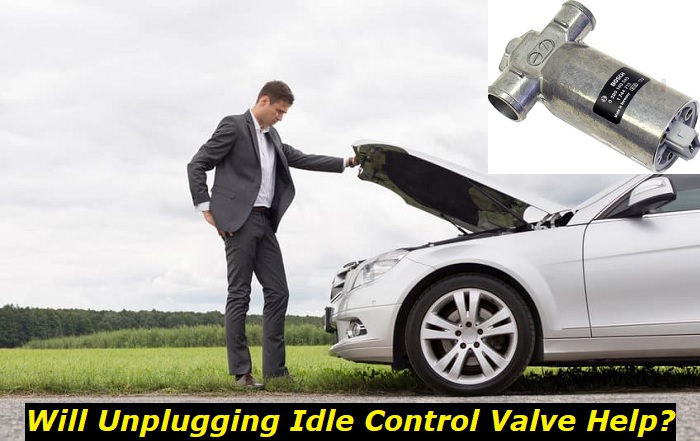Driving in the middle of a stoplight with a shaking car engine ring an alarm to any driver- well, not if it does not come with an oddly diffusing sound. Although it sounds like a normal thing to have a hard start while in the park or starting the engine at home. Any driver should have experienced hard starting at least once.
Electrical problems leading to RPM anomalies highlights
- DIY repairs:possible but complicated
- Tools needed:inspection and repair tools
- Commonreasons:idle control valve, throttle position sensor, wiring, software
- Time to repair:1 - 2.5 hours
- Price for parts:$50 - $300
- Can you drive?Yes
- Alternative solutions:unplugging sensors, resetting or relearning sensors

How Does the Idle Air Control Valve Work?
The Idle Air Control Valve is an electronic valve that controls the air that goes into the throttle plates when the engine is idling. It has a sensor that communicates with other components of the Engine Control Unit (ECU) and decides how much air is allowed to bypass the throttle plate.
The first sign that the valve works properly is having an adequate amount of idle speed.
What is Car Idling Speed?
The idle speed is the rate at which your engine operates while the car is idle. Your vehicle is in idle position when your car is in the park, at traffic lights, or starting the engine. The Card Idling Speed goes by Revolutions Per Minute or (RPM) measurement.
And the normal speed when your car is idling should range between 600 to 1000 RPM.
Why do Car Owners Unplug the Idle Air Control Valve?
For drivers who already unplugged the IAVC, you must have identified that it is faulty. You are probably trying to reset the valve and try out if it works again.
Or, you decided to temporarily unplug it to stop it from detecting idle speeds issue.
Because since unplugging it, the fluctuating idle speeds or hard starting miraculously disappeared. And you seem to have a smooth start again.
But you haven't addressed the main issue about your Idle Air Control Valve, which could result in a more serious engine problem.
Your Idle Air Control Valve is Failing
Failure is the reason why you have to unplug the valve. And you must have experienced any of the symptoms below.
- The car doesn't hold at idle
Your car does not hold at idle when the valve is shut or clogged. When it does, the air the throttle needs will get through shortly, resulting in low idle speed. Your throttle plates have springs that open when the air passes through. But with low idle speeds, these plates will remain shut or open slightly.
- Lean or rich idling
Lean idling is when you feel your car is receiving less fuel amount than it needs. Rich idling is when your engine receives excessive gas than it needs to idle. Any of the two is an abnormal behavior when idling.
You may hear odd sounds like revving, diffusing, dying, or gurgling when you try to start or stop your engine. It means your valve is not working properly.
- Trouble starting the engine
Any driver must have experienced hard starting. During this time, your engine could not gather enough fuel to start the engine.
- Stalling
Stalling happens when the air control valve fails to supply a consistent amount of air, resulting in the engine dying during parking or stopping. During this time, your engine is trying hard to keep its power on, but the air supply is not enough. So the car engine turns off after starting.
- Check engine light
Additionally, you should see a check engine light when your car is not idling smoothly.
What Can You Do If the Idle Air Control Valve is Failing?
Unfortunately, many drivers unplug their IAC valve when they notice it failing. They think the problem disappeared. They believe it would be safe to drive without the function of the IAC valve. Sometimes, they would continue to use the car and forget to address the situation.
Here's what you can do if you notice a problem with your IACV.
- Try Resetting the IAC
First, you can test the valve. Turn off your radio and AC so you can hear clearly. Listen carefully to how it sounds when idling and turning off the engine. Next, note down its RPM. It should have 600 to 1000 RPM.
Also, you want it to sound smooth without having inconsistent noises or feeling too much or lesser air.
If the RPM is anywhere lower than needed, try resetting the IAC. Each model will have its own way to reset the IACV, so read in forums or find some guides elsewhere for your vehicle model. Actually, the process is always pretty straightforward.
- Clean the Idle Air Control Valve.
When you take less time to bring your vehicle for maintenance, your engine components tend to accumulate dirt- including this particular valve. Sometimes, you can clean it along with the throttle body so it works again promptly.
All you need is to locate the valve. You can find it directly attached to the throttle body. Disassemble these components by removing the filter box, hoses, and air ducts and disconnecting them from the throttle body. Unscrew them properly. Disconnect the cables and plugs attached to the IAC valve. Take the gasket off. You may have to replace the gasket too.
Use a special idle air control valve cleaner. Soak the valve in the carbon cleaner for about 15 minutes and wipe it until you have removed all dirt and grime. You can do this again if needed. Reassemble the throttle body components and reconnect them to the ducts and hoses. Screw the valve back and replug the electrical cables.
- Replacing the Idle Air Control Valve
Replacing the valve is the best option to solve the malfunctioning issue. In cases where resetting and cleaning do not resolve the problem, you have no other choice but to replace the valve.
What Happens if You Unplug Idle Air Control Valve? Can You Drive?
Technically, you can drive your vehicle without the Idle Air Control Valve. However, unplugging it would cause other issues that you may not notice at once.
- Your car will burn more gas.
When you unplug Idle Air Control Valve, you will spend a long time warming up the engine. There would be irregular fuel-air mixture readings. So the engine works hard to idle. You will have to warm up your engine longer every time, just like in the old days.
This activity eats up more gas. You will not notice it at first, but frequently filling up your tank would be more expensive than having to replace the valve.
- You may fail an emission test.
Without an IACV, you will have inaccurate fuel-air mixture readings. If your reading shows too much hydrocarbon, carbon monoxide, or too much fuel running in the system, you will fail emission tests.
Failed emission test is not a concern for countries without strict emissions policies. However, if you're constantly running your vehicle without this valve and with the wrong gas-air ratio, it may damage your catalytic converter.
- It may damage other components.
You may think you have fixed the problem, but you have no idea you are damaging other engine components as you go for longer mileage. Your IACV communicates with your Engine Control Unit. Without the signals from its sensors, it will disrupt the system. The most affected part will be the catalytic converter in your exhaust system, as it's responsible for converting gas.
- The car engine may shut off right after it starts
With a longer warm-up and drop in temperature, your engine would have trouble idling. At some point, it could run rich, or the idle speed may drop. The fluctuating speed rate is stressful for the ECU. It will have trouble starting and may potentially stop before it starts.
Another example is heavy loading. If you load your vehicle's air conditioning system and headlights, your engine might not hold enough and eventually stall.
How to Prevent this From Happening?
Luckily, you may not have to replace the air control valve. This component could last the lifetime of your vehicle. All it needs is regular maintenance to inspect if it is functioning and to see if the valve is in good condition.
Maybe you only have to replace the gasket. Maybe, you only have to clean it and remove the grime that has built up.
If you are a greaser, you can check this in your garage at once and clean or replace the valve yourself. But for most cases, maintenance is done in your trusted service shop.
You do not have to wait for that revving or dying sound when idling. It's unsafe. You can end up speeding up on a pedestrian or stalling in the middle of the track with a faulty Idle Air Control Valve.
In most systems in your vehicle, you only need to perform regular maintenance at the mileage reached, so everything works fine. If you haven't remembered the last time the IAC valve got checked, take time to drop it off to your expert service mechanic.
About the authors
The CarAraC research team is composed of seasoned auto mechanics and automotive industry professionals, including individuals with advanced degrees and certifications in their field. Our team members boast prestigious credentials, reflecting their extensive knowledge and skills. These qualifications include: IMI: Institute of the Motor Industry, ASE-Certified Master Automobile Technicians; Coventry University, Graduate of MA in Automotive Journalism; Politecnico di Torino, Italy, MS Automotive Engineering; Ss. Cyril and Methodius University in Skopje, Mechanical University in Skopje; TOC Automotive College; DHA Suffa University, Department of Mechanical Engineering






Add comment